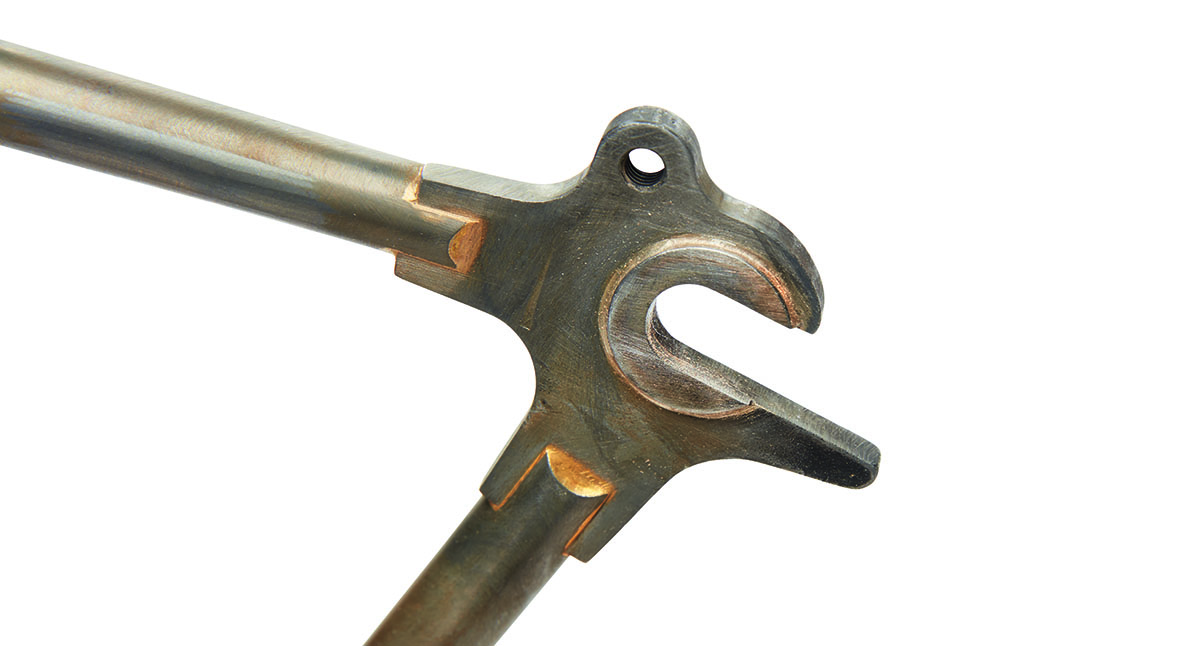Rene Herse Framebuilding Parts
It’s no secret that we love steel bikes at Rene Herse Cycles. (We are fond of carbon and titanium, too!) Bikes from each material have their purpose in our stables. I love my carbon Rene Herse × OPEN U.P.P.E.R. and my titanium Firefley for what they do. Both are wonderful bikes, and I ride them a lot. And yet, for my biggest adventures, I prefer bikes made from steel.
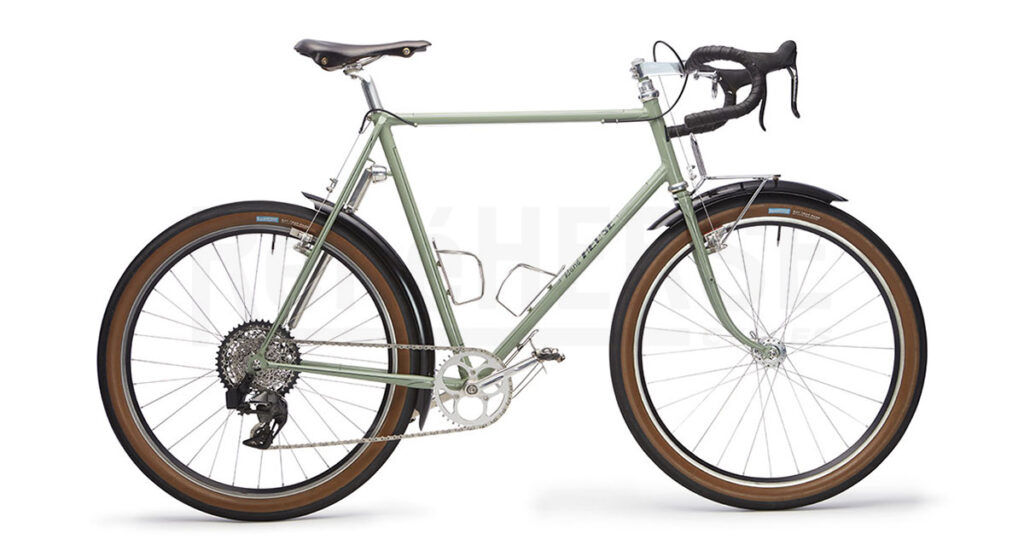
For us, steel is not a ‘retro’ choice, but simply the best way to make a bike for adventures that extend far beyond the horizon. With steel, (almost) anything is possible. Integrating lights, fenders and luggage isn’t exactly easy, but at least it doesn’t require prohibitively expensive molds like a dedicated carbon bike would.
That’s why we offer the world’s finest steel tubing—made by Kaisei for the bikes of professional Keirin racers—in custom-drawn dimensions, optimized for the bikes we love. And when we started our project of making a small run of randonneur bikes and frames to celebrate the René Herse anniversary, steel was the best option. It was a good exercise, because we quickly ran into all kinds of problems that many framebuilders know all too well.
Many framebuilding parts were originally designed for classic racing bikes. They are not always suitable for modern all-road and adventure bikes. In the end, we had to make almost everything ourselves, as there wasn’t much out there that’s suitable for the bikes we envision. And, of course, all those parts are now available to all framebuilders and constructeurs—that was always the impetus behind this project. Here are a few of them:
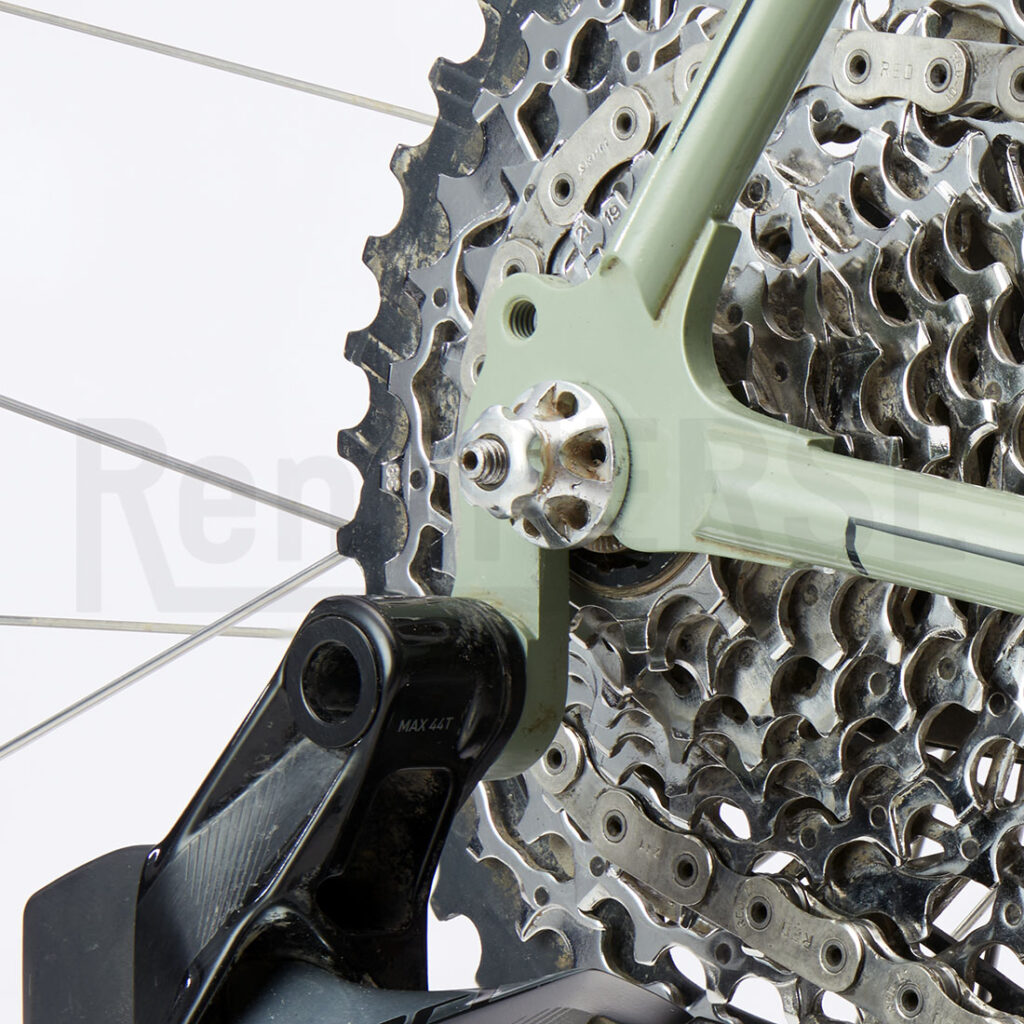
Rene Herse Dropouts
On Rene Herse bikes, the seat- and chainstays extend as far as possible toward the rear axle. Tubular stays are stronger and lighter than flat dropouts, so this adds strength and saves weight. In the past, this required custom-made dropouts. Now we are offering dropouts in four angles for different frame sizes from 48 to 63 cm.
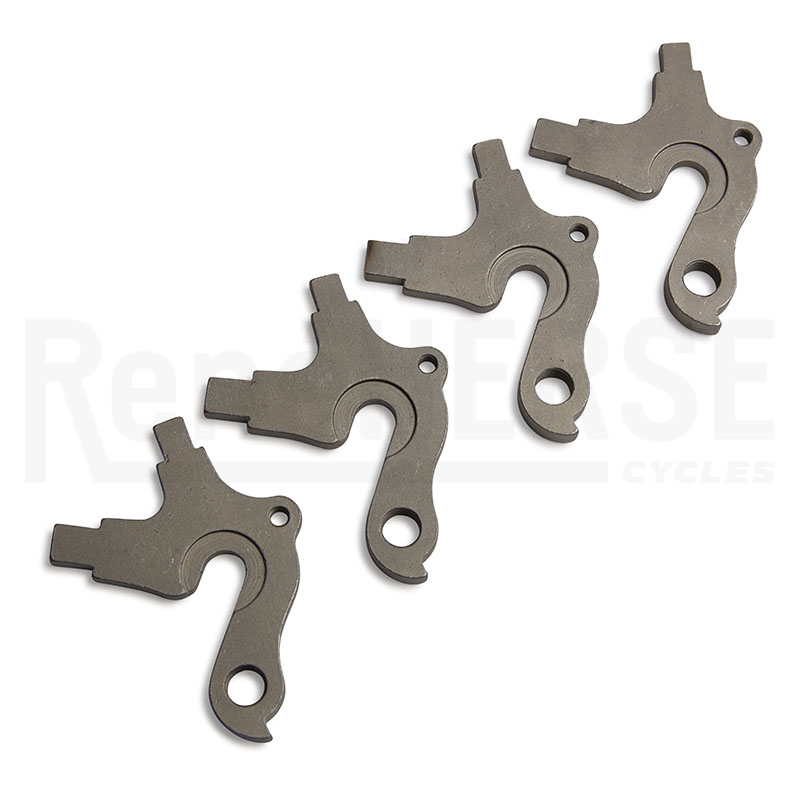
The dropouts incorporate a fender/rack eyelet. The hanger is optimized for modern derailleurs to provide crisp and fast shifting. A stainless steel disc (included, not shown) is brazed into a recess on the inside to prevent gouging the paint when the wheel is inserted.
The dropouts are made from rolled SS41 steel. The thickness of the dropout is 5 mm—offering utmost durability, yet remaining lightweight—with a 7 mm-thick eyelet to match modern derailleurs with (longer) bolts that are designed for the dropouts of carbon frames. Rene Herse dropouts have already proven themselves in Unbound XL, Dark Divide 300, the Arkansas High Country Race and many adventures in the Cascade Mountains. The dropouts are also available in a special version for Nivex derailleurs (top photo).
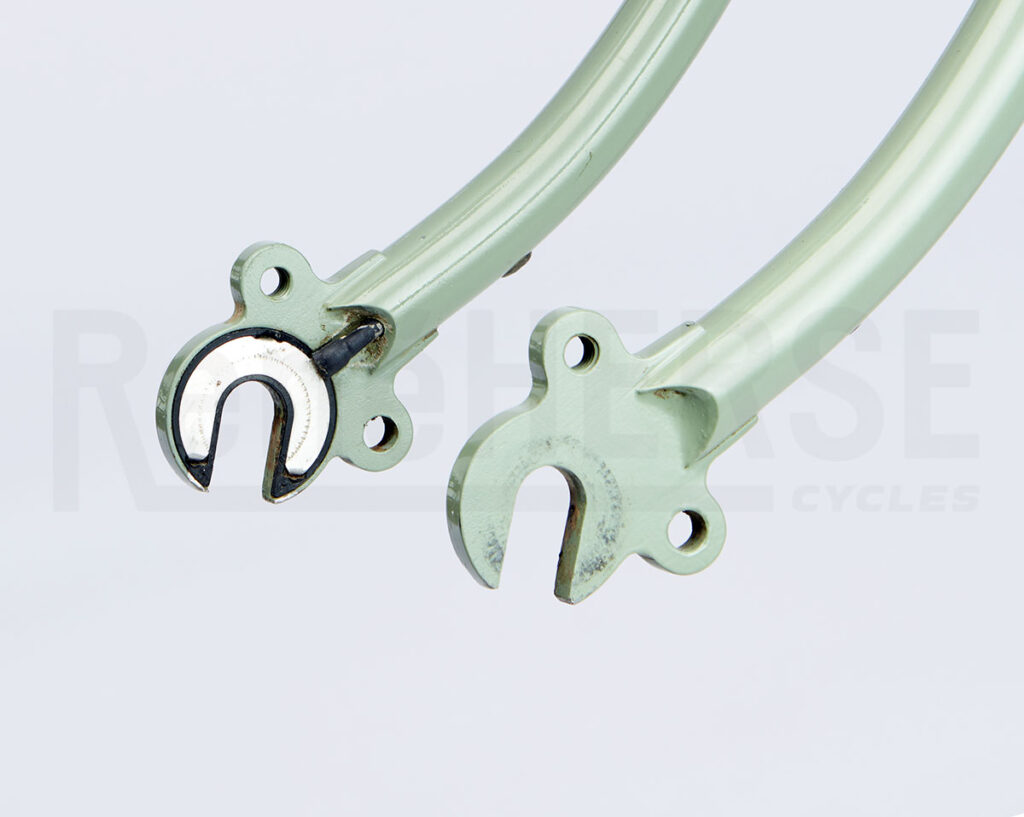
Rene Herse SL Front Dropoputs
The SON SL system eliminates the cable connectors to the generator hub. An insulated contact plate in the fork’s dropout transmits the electricity directly to an insulated ring on the hub axle. The hub axle itself and the other dropout form the return path for the current. It’s an ingenious system that makes it easy to remove the wheel and eliminates problems with connectors breaking or malfunctioning.
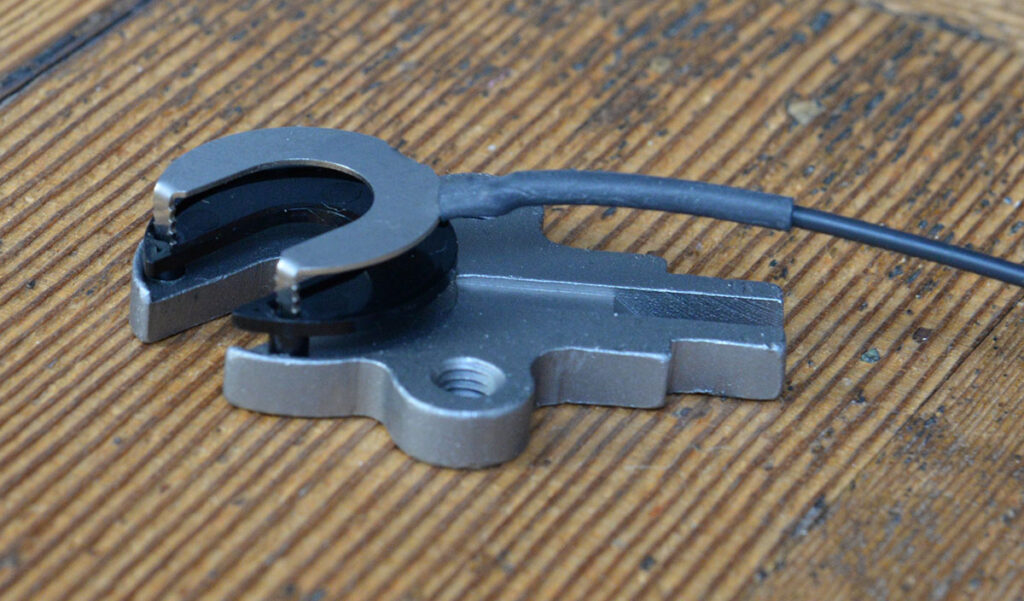
The original SON SL dropouts were designed for German city bikes. They are a bit bulky for use on finely crafted custom bikes. Rene Herse now offers front dropouts that are smaller and thinner, but still use the original SON insulator and contact plate for reliability and ease of service. The material surrounding the insulator has been reduced to a minimum, and the positions of the eyelets for fender and rack have been optimized. This isn’t just more elegant (and lighter), but it also reinforces the dropout. Since the dropouts are thinner than the original (but plenty thick for strength), the SON insulator tabs must be sanded off slightly so they don’t protrude on the outside of the dropout. A channel guides the wire into the fork blade.
The left dropout does not have an insulator, so it can be smaller than the right one. (You rarely see both dropouts at the same time!) To ensure that the bike does not fall over when placed on the ground with the front wheel removed, the tips of the right dropout are extended slightly to match the height of the left dropout. A stainless steel plate ensures perfect connectivity even on powdercoated forks. The dropouts are made from 5 mm-thick rolled SS41 steel.
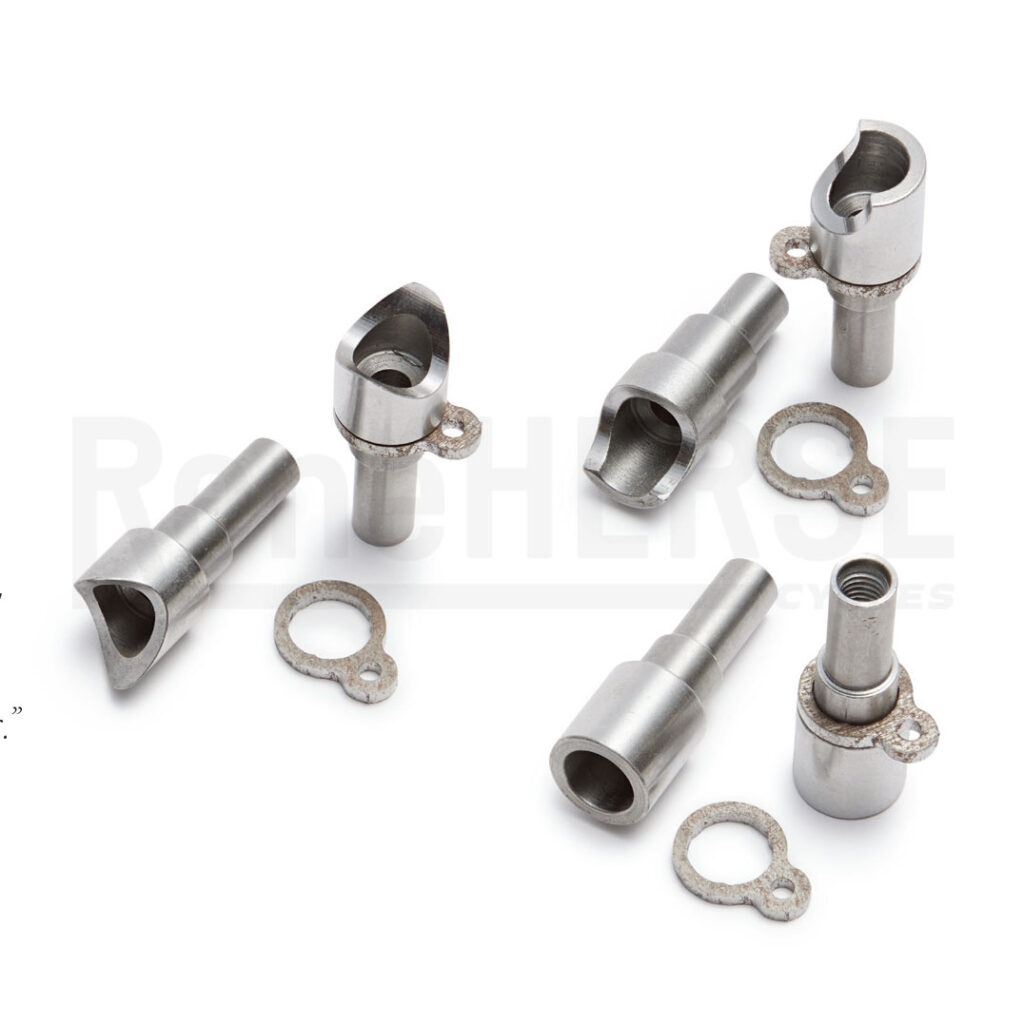
Rene Herse Cantilever Pivots
Most cantilever pivots on the market today were originally made for production mountain bikes, where low cost was the major consideration. Their dimensions are not always accurate, and the material can be soft. Once I spent over an hour sanding down two cantilever posts that had bulged ever so slightly under the pressure of the bolt, once it was tightened. That’s when we decided to make our own canti posts.
Rene Herse cantilever posts are precision-machined from Cromoly steel. They are available uncut (bottom right), as well as pre-mitered for Kaisei TOEI Special fork blades (left) and with miters for seatstays (top right). We also offer custom-made pivots for centerpull brakes.
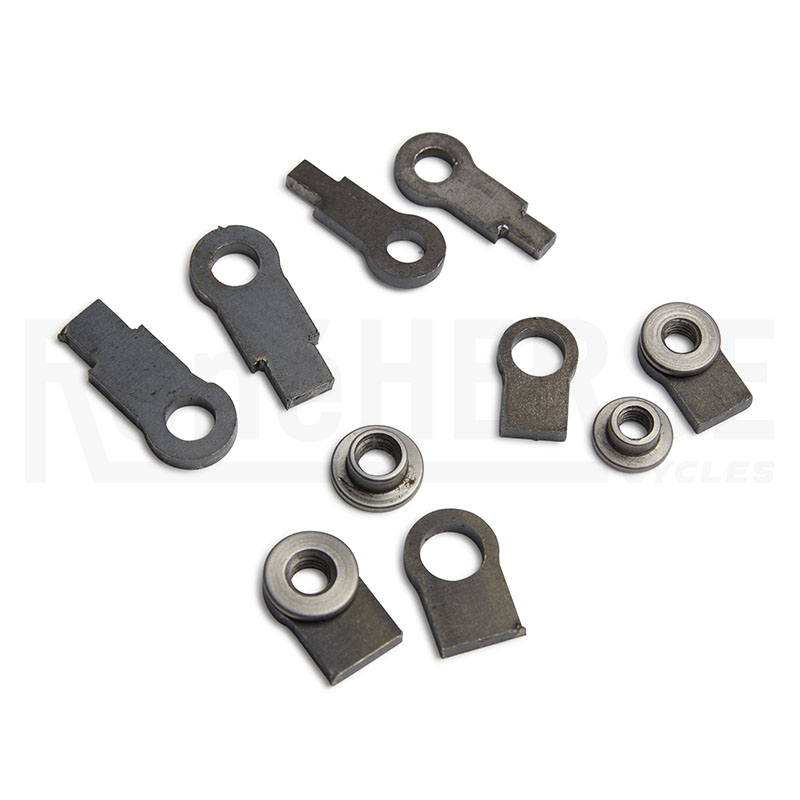
Rene Herse Rack Tabs
Rack tabs are small parts, but they make a big difference in the elegance of the frame. In the past, ‘hourglass’ eyelets were popular, because they are easy to braze onto the frame/fork tubes, but they look bulky. However, the threads on thin tabs can strip if the rack bolts are overtightened. So we made (probably) the world’s most sophisticated rack tabs.
A custom-machined insert allows for longer threads (5 mm) without making the tab itself thick and bulky. The rack tabs are available with M5 threads for small racks and with M6 threads for ultra-strong camping and porteur racks. Matching tabs for the racks (without threads) are available in both sizes.
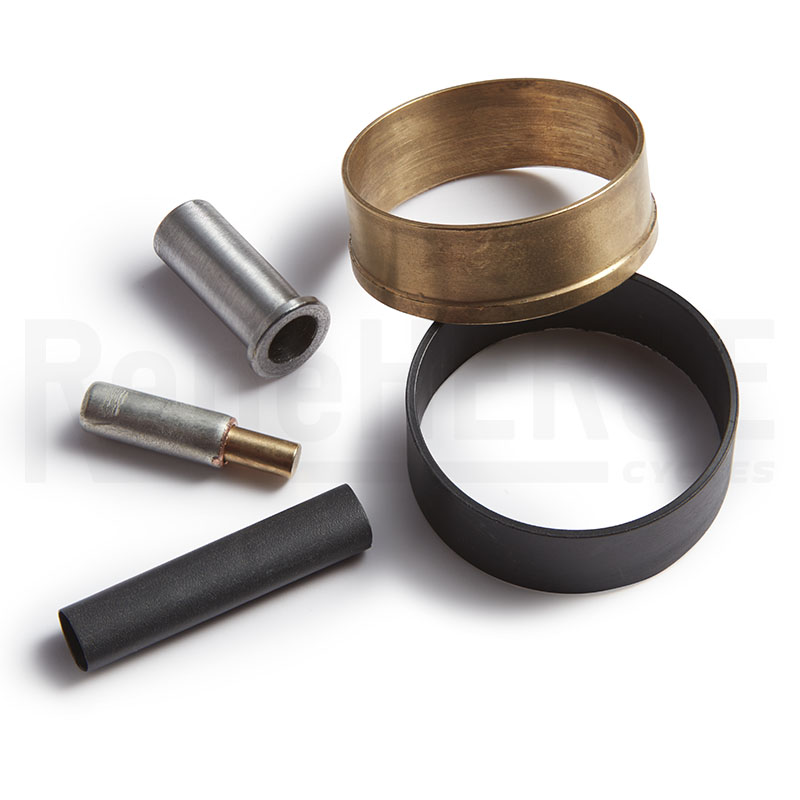
Rene Herse Headset Slip Ring
Among the ingenious features of Rene Herse bikes are the internal lighting wires. Not only do the wires run inside the rack and frame tubes—the electricity for the taillight is even transmitted through the headset, so there are no external wires connecting frame and fork.
The clean appearance is just one advantage of this system. External wires can get snagged and broken, and connectors that are exposed to the elements often stop conducting electricity after a few years. Internal wires are protected and last as long as the bike. (Your car has internal wires.)
The headset slip ring, developed by René Herse in 1946, eliminates the wire connecting frame and fork. Classic Rene Herses used a fragile carbon brush that was easy to damage if the fork was removed without proper care—these bikes were intended to be serviced only by the Herse shop.
Our new version uses a strong brass brush. The slip ring is also made from brass and reinforced with a lip to keep its shape when it’s pressed into the head tube. The ring and insulator are designed to provide an easy path for the brush to slide in and out of the head tube when the fork is removed or installed. The system includes the brass slip ring, insulator ring, spring-loaded contact brush and holder (which is brazed into the steerer tube), plus shrink tubing as insulation for the contact brush. Making all these parts was quite the project, with suppliers on three continents.
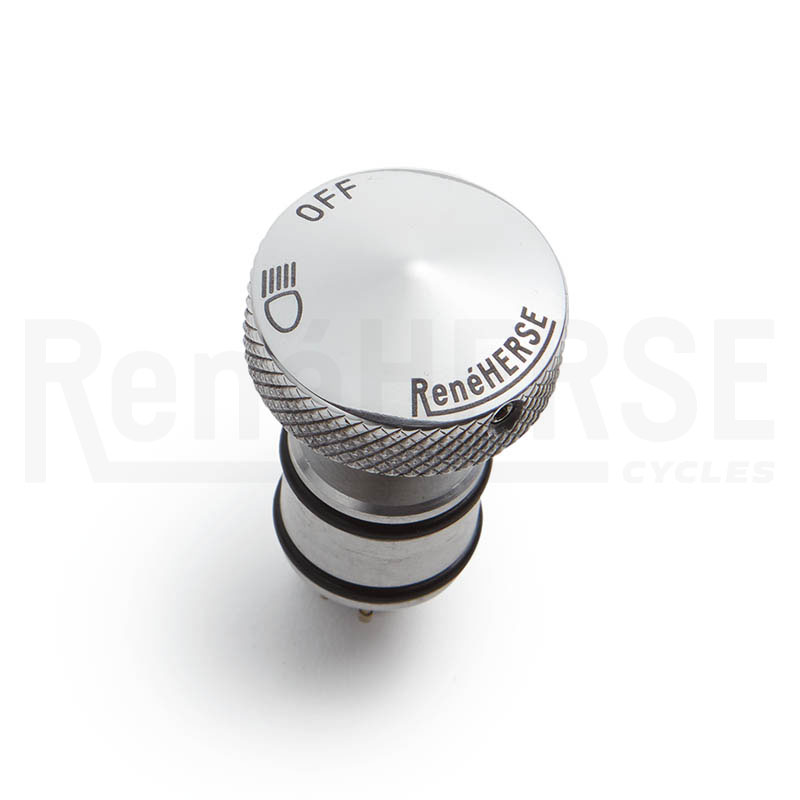
Rene Herse Light Switch
I doubt I’m the only one who’s been bothered by this: To switch on the lights while riding, I have to reach down and operate a switch next to the whirling spokes of the front wheel—or even get off the bike and push two separate buttons, if my bike has battery lights. In my car, I operate all lights at once with a switch located next to the steering wheel.
The Rene Herse light switch is designed to work with the Rene Herse stem. Turning the stem cap operates a rotating switch that’s inside the steerer tube of the fork. That way, the switch is protected from the elements, yet it’s easy to remove if you need to take out the fork. We published the design of the prototype in Bicycle Quarterly many years ago, and it’s inspired others to create their own versions. The Rene Herse version uses a top-quality switch and custom-machined parts for the ultimate in reliability. When I see a tunnel ahead during a mountain descent, turn the switch, and both lights come on, I can’t help but smile.
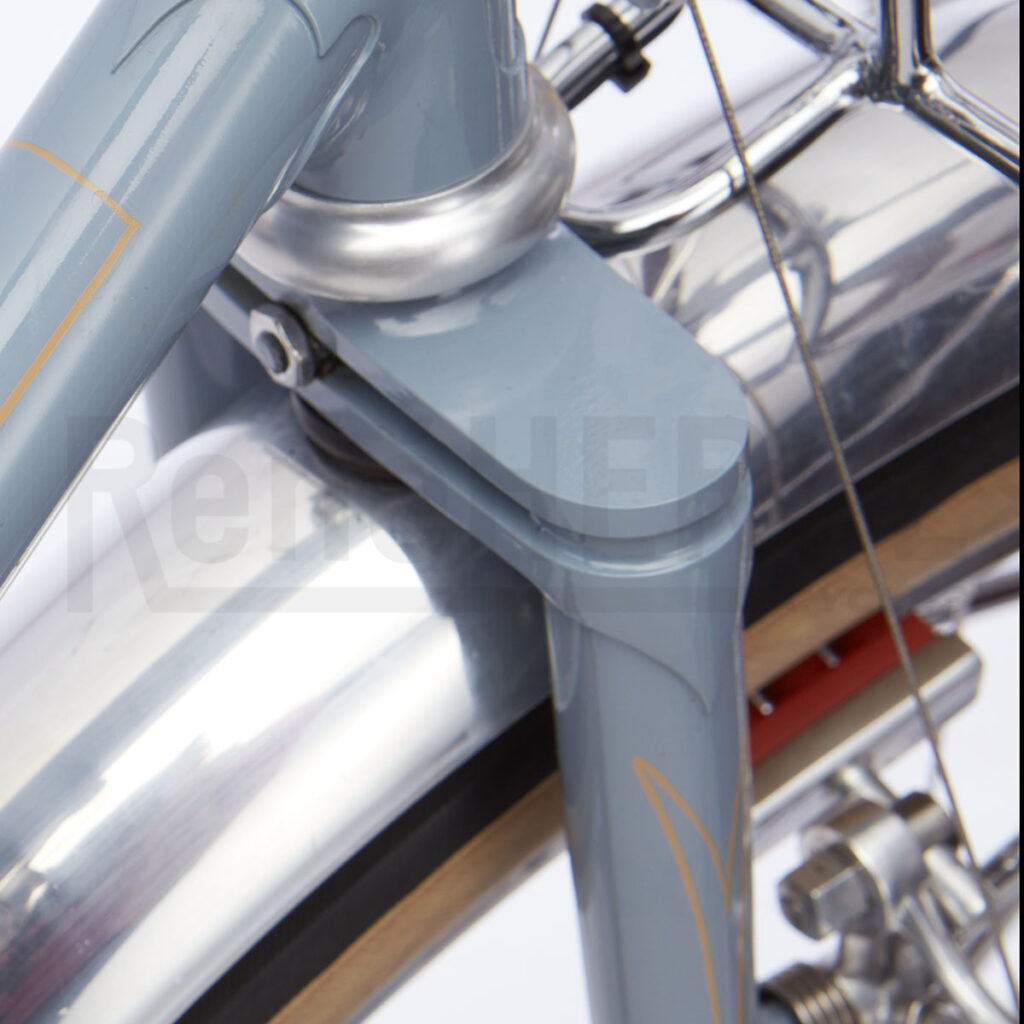
Rene Herse × Kaisei ROUND Fork Blades
We love rim brakes for steel bikes, because they allow us to run slender fork blades that offer just enough suspension to take the edge off the bumps encountered on rough gravel. (Disc brakes feed the braking forces into the lower section of the fork, so they blades have to be stiff.) The best rim brakes offer plenty of braking power—enough to lift the rear wheel—and arguably better modulation than disc brakes. (Your hand is directly connected to the rim and tire rather than having to transmit the feedback via spokes that wind up when you brake.)
When I designed my bikes for the Oregon Outback and Unbound XL around 54 mm-wide tires, I chose cantilever brakes, as a centerpull would have to be huge to reach around the ultra-wide tires (and fenders). However, with clearances that large, the canti posts attach far from the fork crown, and the fork blades tend to twist when braking hard. Round fork blades are best to resist that twist, but I also wanted to use the slender ‘TOEI Special’ fork blades that absorb shock so well. After all, that is the point of using rim brakes in the first place!
So we got Kaisei to make some round fork blades with the same slender tips. The round blades measure 23 mm (OD) at the top, so they don’t fit most fork crowns. For my bikes, Mark Nobilette, who builds our Rene Herse frames, made twin-plate crowns to the same classic design as René Herse used on some special bikes. For me, the feel (and speed) of my gravel racebikes on bumpy terrain is something really special.
To work with ultra-wide tires, cantilever brakes need longer straddle cables. We now offer a 345 mm XX-Long straddle cable for our Rene Herse cantilever brakes. (You may have heard somewhere that longer straddle cables reduce the effectiveness of cantilever brakes… that applies only to low-profile brakes that were briefly popular in the 1990s, but not to powerful wide-profile cantis.)
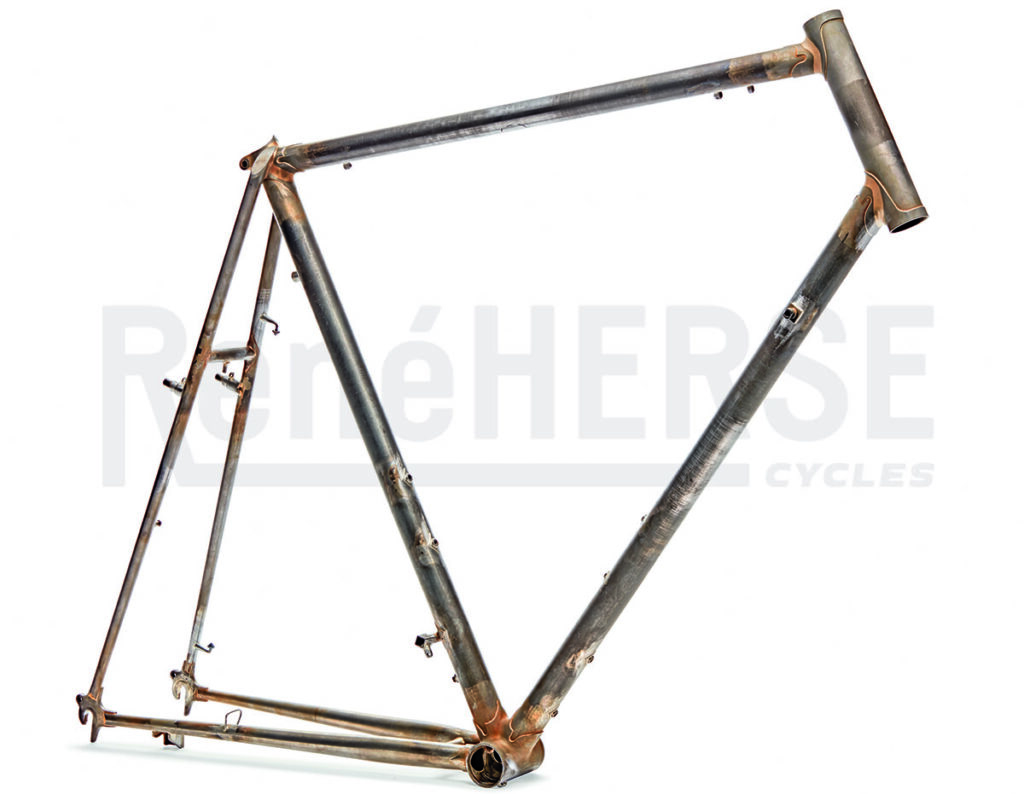
All these parts are designed to work together. The anniversary Rene Herse frames are also a test to make sure everything fits together seamlessly. The first raw frame of the limited edition is featured—in the raw—in the current Bicycle Quarterly. Without paint obscuring the details, it gives you a rare look at how top-quality frames are constructed.
The frame is now assembled, and it’s exciting to see it on the road. It’s even more exciting that, thanks to all the parts created for this project, it has become just a little easier to create wonderful bikes like these.
More Information:
- Framebuilding parts in the Rene Herse program.
- The current Bicycle Quarterly has a full photo shoot of the prototype frame.


